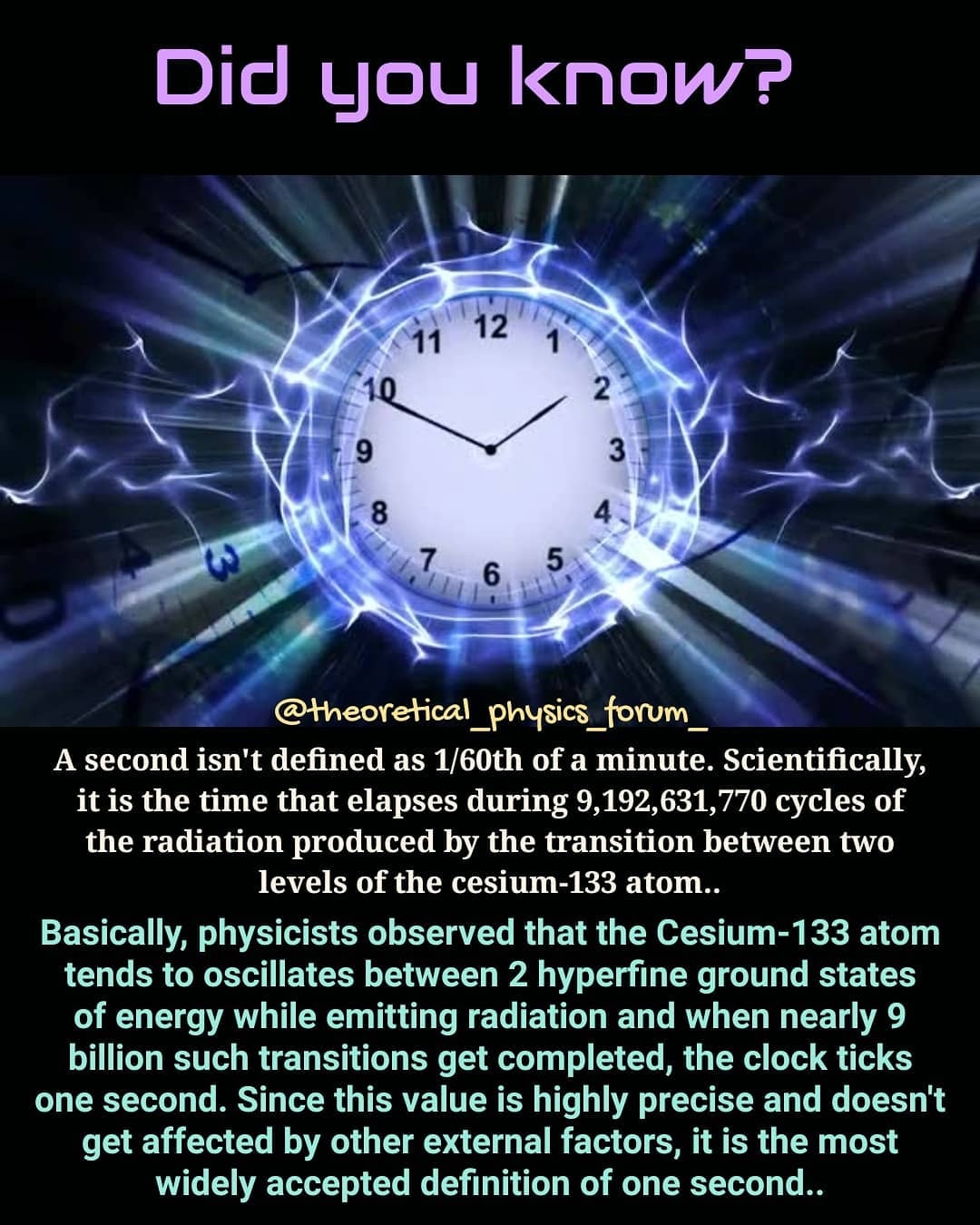 Credit: IG @theoretical_physics_forum
Credit: IG @theoretical_physics_forum
From Scientific American:
"When exposed to certain frequencies of radiation, such as radio waves, the subatomic particles called electrons that orbit an atom's nucleus will "jump" back and forth between energy states. Clocks based on this jumping within atoms can therefore provide an extremely precise way to count seconds.
It is no surprise then that the international standard for the length of one second is based on atoms. Since 1967, the official definition of a second is 9,192,631,770 cycles of the radiation that gets an atom of the element called cesium to vibrate between two energy states.
Inside a cesium atomic clock, cesium atoms are funneled down a tube where they pass through radio waves . If this frequency is just right 9,192,631,770 cycles per second then the cesium atoms "resonate" and change their energy state.
A detector at the end of the tube keeps track of the number of cesium atoms reaching it that have changed their energy states. The more finely tuned the radio wave frequency is to 9,192,631,770 cycles per second, the more cesium atoms reach the detector.
The detector feeds information back into the radio wave generator. It synchronizes the frequency of the radio waves with the peak number of cesium atoms striking it. Other electronics in the atomic clock count this frequency. As with a single swing of the pendulum, a second is ticked off when the frequency count is met."
More resources on cesium 133 atomic clocks:
https://www.scientificamerican.com/article/how-does-one-arrive-at-th/
https://science.howstuffworks.com/atomic-clock3.htm
https://www.livescience.com/32660-how-does-an-atomic-clock-work.html
https://www.britannica.com/technology/cesium-clock
https://en.wikipedia.org/wiki/Caesium_standard